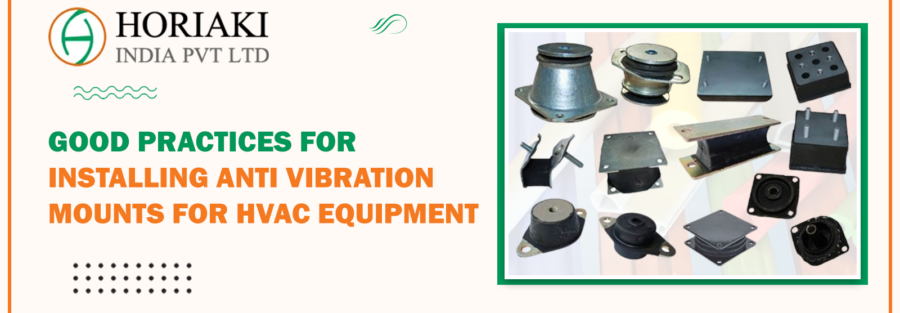Good Practices for Installing Anti Vibration Mounts for HVAC Equipment
The proper selection of anti vibration mounts is critical for attaining acceptable vibration isolation values in HVAC equipment. However, if the vibration isolators are installed incorrectly, the desired isolation results may not be achieved. In this post, we will discuss best practices for installation, including examples of what has to be done and what should be avoided to avoid costly surprises.
Each work is unique and has inherent complications; in fact, several aspects might influence vibration transmissibility. These include the materials used in the construction (wood or concrete), the place where the machinery must be placed (ground level or rooftop), and the sort of space adjacent to the machine room.
Even if it is difficult to outline all potential problems, we will highlight some typical ones and explain how to prevent them.
Subframe Stiffness With Spring Mounts
The air handling unit maker must demonstrate that the frame is sturdy enough to be supported by appropriate supports. In such circumstances, we propose reinforcing it with IPN 120 beams that are attached around the full perimeter. The spring mounts will be inserted under the equipment frame at regular intervals, and their deflection will be verified to ensure the installation is flat and level.
If the deflection of the vibration isolators is not uniform across all mounts, their position must be modified; this can be accomplished by increasing the density of the anti vibration mounts in the most deflected places.
The stiffness of the brackets.
The brackets must be at least ten times stiffer than the anti vibration mounts. If the brackets are softer, their rigidity may impact the system’s vibration isolation and cause damage to the anti-vibration mount.
Width Of Metal Base On Roof Tops
The metal bases above and below the anti vibration mounts must be properly dimensioned to provide enough support. The whole contact area of the metal interfaces must be supported to minimize uneven loads and subsequent vibration isolator deterioration.
The width of the brackets when using TSR anti-vibration mounts
It is crucial to remember that the load must be spread throughout the whole surface of the elastomer pads. This is critical to achieving elastic characteristics; if the contact area is too small, a steel distribution plate of suitable thickness will be required to prevent deformation when loaded.
Installation of pipe for high-vibration amplitudes
When encountering significant levels of vibration during pipe installations, the amplitude can be minimized by adding damping to the system. One effective method is to attach an inertia base to anti vibration mounts, as seen in the figure below. This reduces vibration energy and dampens the hanging piece.
Installing HVAC equipment with a high center of gravity
Machines with a high center of gravity tend to be unstable. The design engineer’s initial instinct may be to replace the anti-vibration mounts with stiffer ones. Although this may fix the stability problem, greater stiffness increases the system’s inherent frequency, resulting in a loss in vibration isolation.
Stabilizers are a straightforward solution to this problem. Stabilizers can be inserted at the greatest amplitude places, but extra care must be given to prevent excessive vibration from being transmitted to the neighboring supporting parts. The portion should only operate when the machine is subjected to shocks, with the lowest stiffness feasible when the machine is operational.
Horaiki India Private Limited manufactures anti vibration mounts and has a team of engineers to assist with your installation needs, so please do not hesitate to contact us if you require assistance on this issue.


